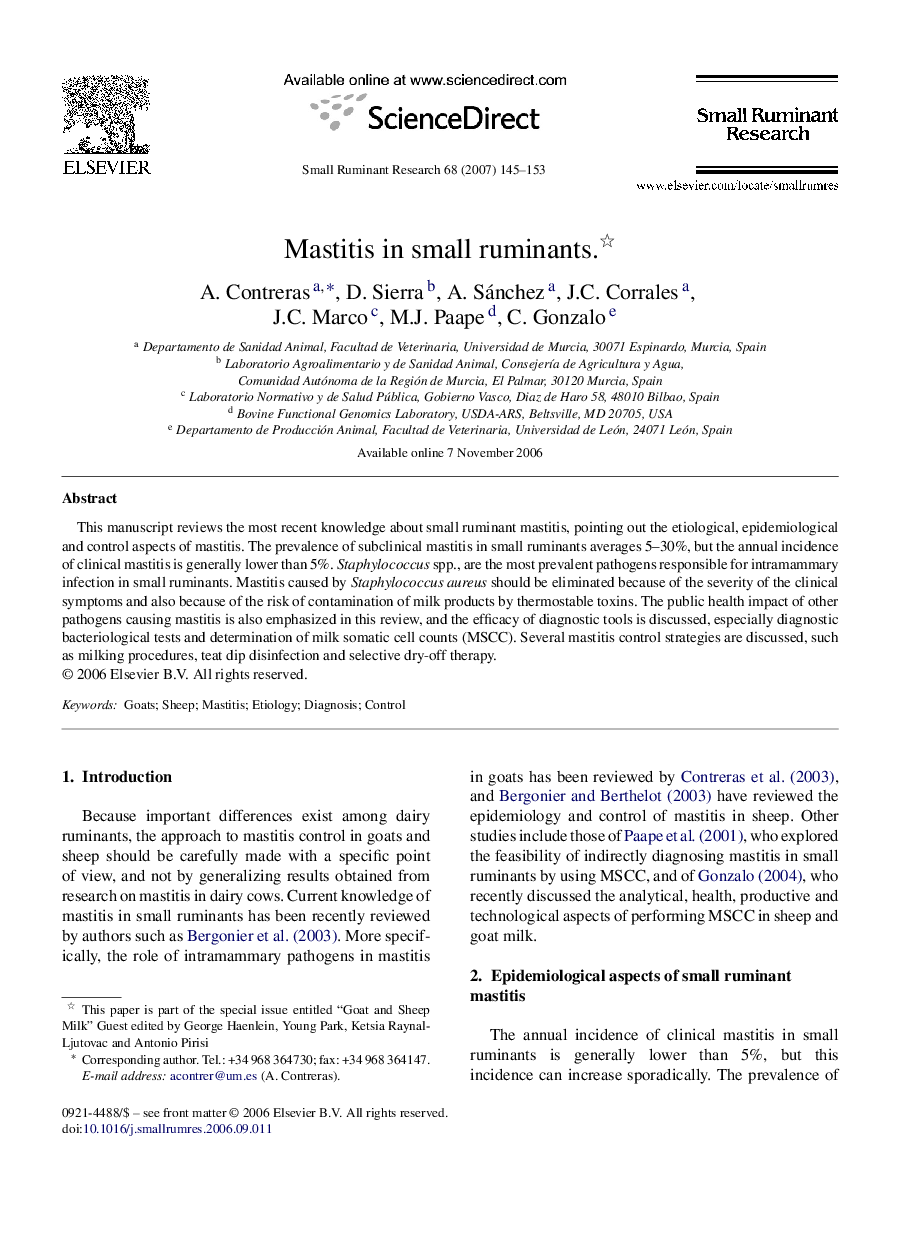| Article ID | Journal | Published Year | Pages | File Type |
|---|---|---|---|---|
| 2458348 | Small Ruminant Research | 2007 | 9 Pages |
This manuscript reviews the most recent knowledge about small ruminant mastitis, pointing out the etiological, epidemiological and control aspects of mastitis. The prevalence of subclinical mastitis in small ruminants averages 5–30%, but the annual incidence of clinical mastitis is generally lower than 5%. Staphylococcus spp., are the most prevalent pathogens responsible for intramammary infection in small ruminants. Mastitis caused by Staphylococcus aureus should be eliminated because of the severity of the clinical symptoms and also because of the risk of contamination of milk products by thermostable toxins. The public health impact of other pathogens causing mastitis is also emphasized in this review, and the efficacy of diagnostic tools is discussed, especially diagnostic bacteriological tests and determination of milk somatic cell counts (MSCC). Several mastitis control strategies are discussed, such as milking procedures, teat dip disinfection and selective dry-off therapy.
